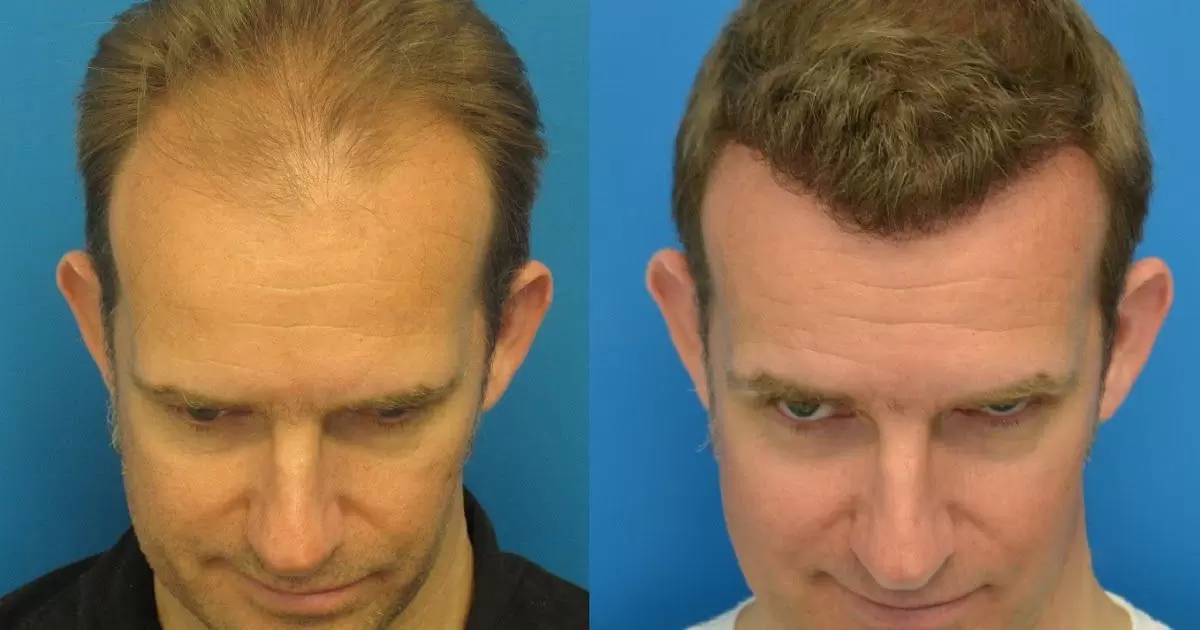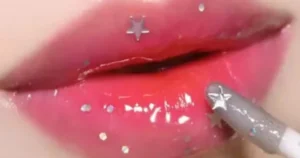While undergoing a hair transplant does involve minor surgical procedures to extract follicular units from the donor area and graft them into the recipient area, most patients report that modern techniques and anesthesia have greatly reduced any pain or discomfort associated with the process.
A skilled medical team works quickly and uses local anesthetics, oral sedatives, and effective pain management strategies to minimize any potential twinges, tightness, or tenderness both during and after the transplant, with any residual soreness typically mild and temporary in nature.
Overall, patients commonly rate the level of pain as mild or moderate, similar to minor irritation or occasional zaps, with over-the-counter medications sufficient for post-operative relief – meaning the minor short-term inconvenience is considered well worth it for the permanent hair restoration and enhanced confidence provided by a successful transplant.
How painful is a hair transplant?
Undergoing a hair transplant is a minor surgical procedure that involves extracting hair follicles from the back of the scalp (donor area) and transplanting them to the front or top of the scalp (recipient area) where hair has been lost. The level of pain and discomfort experienced can vary between patients and depends on several factors:
Medical team
The skill and experience of the medical team performing the procedure plays an important role. An experienced hair transplant surgeon will aim to complete the procedure as quickly and efficiently as possible to minimize discomfort.
Equipment
Modern motorized punches and razors cause less trauma compared to manual techniques. This reduces pain compared to older methods.
Technique
Follicular unit extraction (FUE) and follicular unit transplantation (FUT) are the main techniques. FUE involves removing individual follicular units one by one which tends to be more painful than strip harvesting used in FUT.
Number of hair grafts
Larger procedures involving thousands of grafts will take longer and cause more pain than smaller transplants.
Patient
Pain tolerance levels vary between individuals. Those with a low pain threshold may find the experience more uncomfortable.
In general, most patients describe the sensation during a hair transplant as mild to moderate discomfort, similar to tight braids being pulled or mild electric shocks. Some areas may be briefly numb or tender after. Pain is usually managed well with over-the-counter painkillers.
Hair transplant techniques
The two main hair transplant techniques are follicular unit extraction (FUE) and follicular unit transplantation (FUT). FUE involves carefully removing individual follicular units one by one, while FUT harvests them in small strip sections from the donor area. Both require local anesthesia for pain management during graft extraction and implantation. Though FUE causes some discomfort from multiple puncture sites, modern methods have minimized any significant pain for either procedure.
Is an FUE hair transplant painful?
FUE harvests individual follicular units rather than strips which causes more localized trauma at each extraction site. This makes it slightly more uncomfortable than strip harvesting during FUT.
Is a FUT hair transplant painful?
With FUT, a strip of scalp is removed for extraction. This causes a localized pain at the incision site but is less painful than multiple punctures of FUE. Discomfort is usually mild and well-tolerated.
Hair transplant anaesthesia
To minimize discomfort during the procedure, local anesthesia is used to numb the donor and recipient areas. Options include:
- Local anaesthetic injections – Lidocaine or similar injected directly into the skin to numb the area. May require multiple needle injections which can sting initially.
- Ice numbing – Applying ice packs before injections to further minimise pain from injections.
- Light/moderate oral sedation – mild sedatives help patients relax and feel more comfortable without losing full consciousness.
The medical team aims to ensure effective anaesthesia with as little discomfort as possible so patients can tolerate the transplant well.
Does a beard transplant hurt?
Beard transplants follow a similar process to scalp hair transplantation, extracting hair follicular units from the back of the head and implanting them in the beard area. Most patients describe a mild, cramping discomfort during the procedure managed well with local numbing. Discolouration, swelling and tenderness may occur afterwards for a few days but pain is usually minimal and easily controlled.
Hair transplant pain after surgery
Some level of discomfort, tightness, itching or mild tenderness is common after a transplant as the skin heals over the following week. Over-the-counter painkillers resolve most pain. Severe or prolonged pain requiring strong pain medication is unusual.
Swelling and bruising after FUE may cause marginally more discomfort than FUT but both techniques carry a low risk of significant post-operative issues. Most patients are able to return to normal activity within 3-5 days.
| Hair Transplant Technique | Post-Op Discomfort |
| FUE | Slightly more swelling/bruising than FUT leading to marginally more initial discomfort. |
| FUT | Less puncture sites than FUE so usually less initial swelling but linear scar remains at donor strip site. |
Does Hair Transplant Surgery Hurt?
While hair transplants do involve minor surgical trauma, modern techniques and anesthetic methods have greatly reduced pain levels. For most patients, any discomfort experienced during the procedure is mild and easily manageable. Afterwards, some tenderness may persist for 3-7 days as the recipient and donor areas heal, helped along with over-the-counter medications. More prolonged or severe pain is uncommon. Overall, the temporary mild pain is considered a minor inconvenience for the life-long benefits of a restored full head of hair.
Post-Hair Transplant Surgery
After a transplant procedure, patients can expect:
- 24-48 hours of swelling, bruising, mild tenderness around puncture/incision sites
- A prescription for oral antibiotics and/or painkillers to manage any discomfort
- A loose-fitting cap/bandage worn until review after 1 week
- Stitched or taped strip closure for 7-10 days with FUT
- Avoidance of strenuous exercise or direct sunlight on scalp for 1 week
- Daily gentle shampooing and drying of scalp begins after 2-3 days
With proper post-op care, most patients heal smoothly with low risks of infection or other complications. By 2-3 weeks, discomfort will have greatly reduced with new hair growth becoming noticeable by 3 months.
Hair Transplant Pain
For the vast majority, any discomfort experienced during and after a hair transplant procedure is mild and temporary. Advanced techniques combined with anesthetic solutions have significantly reduced pain levels compared to older methods. While some localized tenderness may last around seven days as the skin heals, the short-term minor pain is considered well worth it for the lasting self-confidence and natural-looking results of a restored full head of hair. With proper pain management, most people tolerate the procedure very well.
Local Anaesthesia Injections
- Local anaesthetics such as lidocaine are used to numb the donor and recipient areas before graft extraction and placement.
- Injections cause a brief stinging or sharp pain as the medication is administered but this lasts only seconds. The numbness helps reduce discomfort during grafting.
- Multiple small injections may be required which some patients find unpleasant but this is usually the most uncomfortable part of the procedure.
Giving Pain Relieving Medications
- Oral pain relievers like acetaminophen (paracetamol) or ibuprofen can help manage any residual tenderness after local anaesthesia wears off.
- Stronger prescription medications are rarely needed but may be provided if nerve pain or severe swelling develops in a small percentage of cases.
Giving light sedation ensure patients feel comfortable and relaxed
- Light/moderate oral or IV sedation provided by an anesthesiologist can help patients feel calm and relaxed without losing full consciousness.
- This significantly reduces anxiety that may amplify any perceived pain levels during the procedure. Patients often nap through parts of the treatment.
Pain & Comfort During Hair Transplantation
- Modern anaesthesia techniques including nerve blocks, local injections and oral sedatives have greatly minimised procedure discomfort.
- Most patients report needle pain as the worst part, lasting only seconds. Grafting feels like mild tugging securely managed with numbing.
- An experienced medical team aims to complete work methodically to balance speed and care taken. Regular breaks aid patient relaxation.
Pain After Hair Transplantation
- Minor headaches, swelling and localized tenderness around puncture/graft sites are normal for 5-7 days as healing occurs.
- Over-the-counter pain relievers easily resolve most residual pain. Ice packs further soothe any discomfort.
- Severe, constant or long-term pain is unusual and may indicate an infectionrequiringmedical attention.
Will pain affect my transplant?
- How well pain is managed makes no difference to graft yield or quality of results. Transplanted follicles are not sensitive nerve structures.
- Discomfort plays no role in determining a successful transplant outcome as long as the patient tolerates the procedure and follows post-care guidelines.
Conclusion
While hair transplant surgery is a minor medical procedure that involves graft extraction and implantation, modern techniques and effective pain control methods have significantly reduced any discomfort experienced by patients. Skilled physicians perform transplants quickly and use localized anesthesia and oral medications to numb areas and palliate any twinges. Most people only feel mild tenderness that is easily managed with over-the-counter remedies.
Residual soreness after is usually temporary with complete healing within a couple weeks. Therefore, despite its surgical nature, many affirm the short-term minimal pain is worthwhile for achieving the long-lasting benefit of a full head of natural-looking hair through transplantation. With proper preparation and care, most find the process very tolerable.











